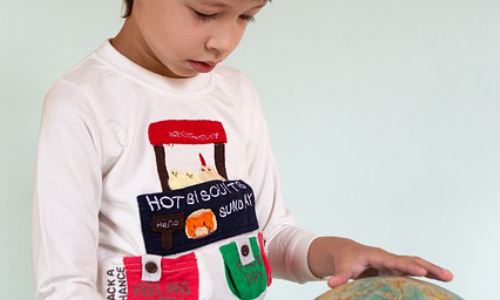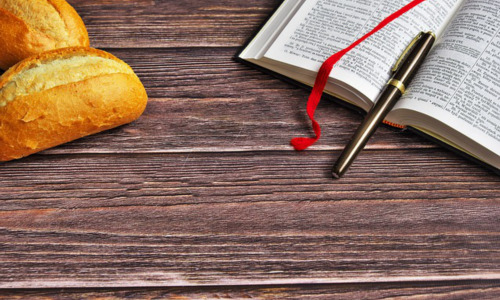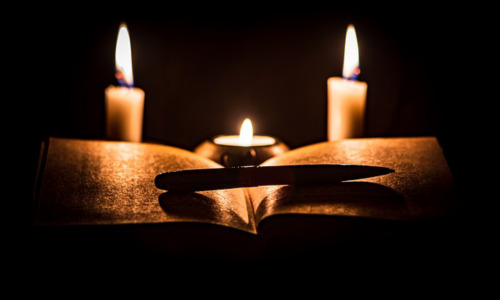crayons是什么意思
Crayons, pronounced /ˈkreɪɑːnz/, is the plural form of the word “crayon.” A crayon is a stick of colored wax, chalk, or other material used for drawing or coloring. It’s a familiar and beloved tool for children and artists alike, prized for its ease of use, vibrant colors, and forgiving nature. Unlike pencils, which rely on graphite or lead, crayons rely on pigment suspended in a binder, usually wax. This waxy consistency allows for a smooth, opaque application of color, readily blending and layering to create a rich tapestry of hues. The earliest forms of crayons were likely rudimentary mixtures of pigments and natural binders, but modern crayons are manufactured with precision, using refined waxes, carefully selected pigments for brilliance and longevity, and often incorporating other additives to enhance their texture, durability, and resistance to breaking. Their simple, cylindrical form, typically ranging from about 1/4 inch to 1/2 inch in diameter, and approximately 3-4 inches in length, has remained largely unchanged for generations. This simplicity contributes to its universal appeal, making it accessible to young children, experienced artists, and everyone in between. Crayons have become synonymous with childhood creativity, representing freedom of expression, experimentation, and the joy of artistic exploration. Beyond the ubiquitous children’s crayons, specialized crayons also exist for various artistic purposes, such as oil crayons, water-soluble crayons, and even artist-grade crayons offering a higher level of pigmentation and blending capabilities. Their enduring popularity stems not only from their practicality but also from their strong association with cherished memories and a sense of unbridled artistic freedom. This association is culturally widespread, deeply rooted in childhood experiences across numerous countries and cultures.
 Crayons’ history is surprisingly rich and intertwined with the development of both art materials and manufacturing processes. While precise origins are difficult to pinpoint, early forms of crayon-like materials date back centuries. Ancient civilizations utilized pigments mixed with natural binders like beeswax, creating rudimentary drawing tools. However, the mass production and standardization of crayons as we know them are relatively recent. The late 19th and early 20th centuries saw significant advancements in pigment chemistry and wax refinement, leading to the creation of the consistent, high-quality crayons widely available today. Several companies rose to prominence, each contributing to the evolution of crayon manufacturing and design, leading to innovations such as the inclusion of binders to improve adhesion and the development of a wider range of colors. The development of the automated machinery capable of producing large quantities of crayons at a reasonable price was crucial in making them accessible to the mass market and solidifying their place in homes and classrooms across the globe. Furthermore, the evolution of crayon packaging, from simple paper wrappers to more elaborate boxes with organized color selections, reflects changing societal trends and marketing strategies. The iconic box of crayons, often representing a spectrum of colors and a symbol of creative potential, is a testament to the crayon’s sustained presence in popular culture.
Crayons’ history is surprisingly rich and intertwined with the development of both art materials and manufacturing processes. While precise origins are difficult to pinpoint, early forms of crayon-like materials date back centuries. Ancient civilizations utilized pigments mixed with natural binders like beeswax, creating rudimentary drawing tools. However, the mass production and standardization of crayons as we know them are relatively recent. The late 19th and early 20th centuries saw significant advancements in pigment chemistry and wax refinement, leading to the creation of the consistent, high-quality crayons widely available today. Several companies rose to prominence, each contributing to the evolution of crayon manufacturing and design, leading to innovations such as the inclusion of binders to improve adhesion and the development of a wider range of colors. The development of the automated machinery capable of producing large quantities of crayons at a reasonable price was crucial in making them accessible to the mass market and solidifying their place in homes and classrooms across the globe. Furthermore, the evolution of crayon packaging, from simple paper wrappers to more elaborate boxes with organized color selections, reflects changing societal trends and marketing strategies. The iconic box of crayons, often representing a spectrum of colors and a symbol of creative potential, is a testament to the crayon’s sustained presence in popular culture.
The impact of crayons extends beyond their simple use as a drawing tool. They serve as a critical tool in early childhood education, fostering fine motor skills, color recognition, and creativity. Crayons facilitate self-expression, allowing young children to communicate their thoughts and feelings visually. The tactile experience of using crayons contributes to sensory development, and the process of coloring can be a calming and therapeutic activity. Beyond childhood, crayons continue to be used by artists of all skill levels for sketching, layering colors, and creating unique textures. The vibrant and diverse range of colors available allows for endless possibilities in artistic expression. Even in professional fields such as illustration, graphic design, and textile design, crayons find applications due to their distinctive properties. Their unique capacity for blending and layering and their ease of use make them invaluable tools for various creative pursuits, demonstrating their versatility and staying power in a world of increasingly sophisticated art supplies. The crayon’s enduring legacy is a testament to its simplicity, effectiveness, and its enduring ability to spark creativity and imagination across generations.

Furthermore, the economic impact of crayons is significant, with a global market encompassing millions of sets produced annually. The industry supports numerous jobs, from manufacturing and distribution to marketing and retail. The crayon has become not just an art supply but also a cultural icon, featured in countless works of art, literature, and film, solidifying its place in our collective consciousness. Its accessibility and affordability contribute to its widespread use and enduring appeal. Its continued prominence is a testament to its enduring ability to inspire and delight.
蜡笔的化学成分和制造工艺
深入了解蜡笔,我们不仅仅要认识它的用途,更要了解它的构成和制造过程。蜡笔并非简单的颜料和蜡的混合物,其内部化学成分和制造工艺都包含着精妙的技术。

蜡笔的主要成分是颜料和蜡。颜料负责提供颜色,种类繁多,包括有机颜料和无机颜料。有机颜料通常具有鲜艳的色彩和良好的着色力,但可能存在耐光性较差的问题;无机颜料则一般具有良好的耐光性和耐候性,但色彩相对较暗淡。蜡笔制造商会根据不同的用途和价格选择合适的颜料组合,以达到最佳的色彩效果和耐久性。
 蜡则是蜡笔的关键成分之一,它决定了蜡笔的质地、润滑度和熔点。常用的蜡包括石蜡、蜂蜡和微晶蜡等。石蜡是石油提炼的产物,价格低廉,但熔点较低,易于变形;蜂蜡是天然产物,熔点较高,质地坚硬,但价格相对较高;微晶蜡则介于两者之间,具有良好的韧性和耐热性。不同的蜡的比例会影响蜡笔的硬度、光泽度和涂抹感。
蜡则是蜡笔的关键成分之一,它决定了蜡笔的质地、润滑度和熔点。常用的蜡包括石蜡、蜂蜡和微晶蜡等。石蜡是石油提炼的产物,价格低廉,但熔点较低,易于变形;蜂蜡是天然产物,熔点较高,质地坚硬,但价格相对较高;微晶蜡则介于两者之间,具有良好的韧性和耐热性。不同的蜡的比例会影响蜡笔的硬度、光泽度和涂抹感。
除了颜料和蜡之外,蜡笔中还可能包含其他添加剂,例如填充剂、增稠剂、稳定剂、抗氧化剂等等。填充剂可以降低成本,并改善蜡笔的涂抹性能;增稠剂可以增加蜡笔的粘度,防止颜料沉降;稳定剂可以提高蜡笔的耐光性、耐热性和耐水性;抗氧化剂则可以防止蜡笔氧化变质,延长其使用寿命。这些添加剂的种类和比例都需要经过精确的控制,以确保蜡笔的质量和性能。
蜡笔的制造过程一般包括以下几个步骤:首先是颜料的分散和混合。颜料需要在熔融的蜡中充分分散,并进行均匀的混合,以确保蜡笔的颜色均匀一致。其次是蜡笔的成型。混合好的蜡笔原料需要进行成型,常用的方法是挤压成型,将原料挤压成圆柱形的蜡笔棒。然后是冷却和固化。成型后的蜡笔棒需要在低温下进行冷却和固化,以确保其形状稳定,不会变形。最后是包装和检验。冷却固化的蜡笔棒需要进行包装,并进行质量检验,以确保产品质量合格。
不同的蜡笔生产厂家可能会采用不同的配方和工艺,以生产出具有不同特点的蜡笔。例如,一些高级蜡笔会使用更高品质的颜料和蜡,并添加更多的添加剂,以提高蜡笔的色彩表现力和使用寿命。有些蜡笔还会采用特殊的工艺,例如油性蜡笔或水溶性蜡笔,以满足不同的绘画需求。
总而言之,看似简单的蜡笔,其内部化学成分和制造工艺却包含着许多技术细节。对这些细节的深入了解,能够让我们更好地欣赏和应用这种古老而常用的绘画工具。 了解蜡笔的组成和制造过程,让我们更加 appreciate 它的实用性和艺术价值。 这些知识,不仅能帮助我们理解蜡笔的使用,还能启发我们对材料科学和制造工艺的兴趣。


评论